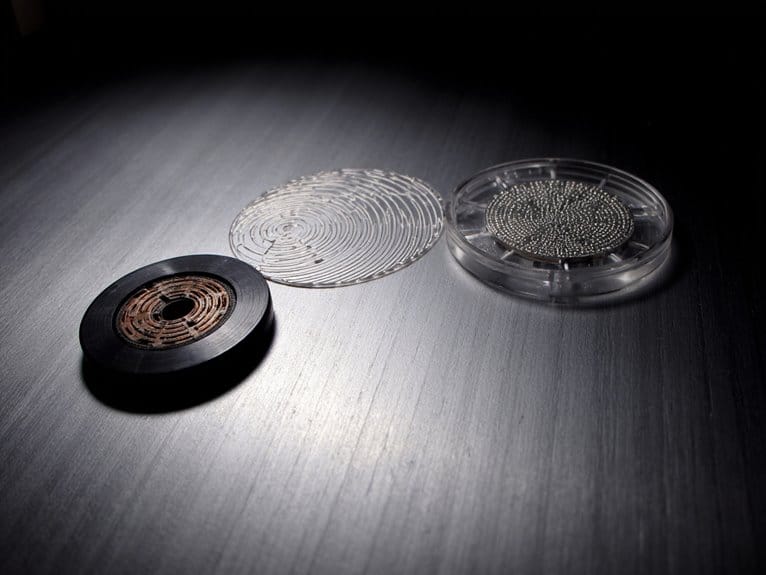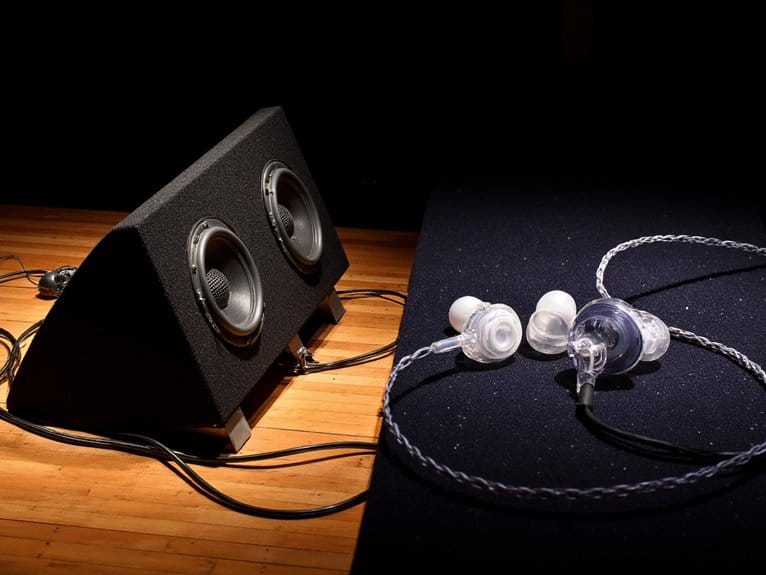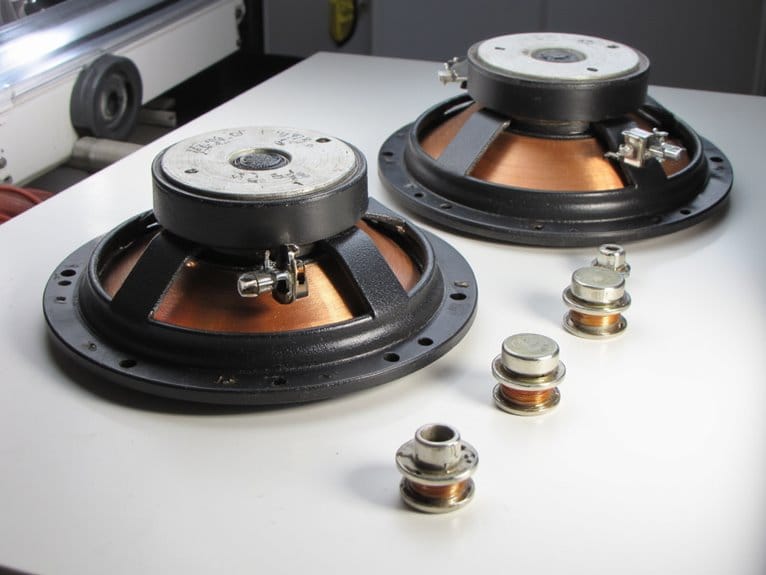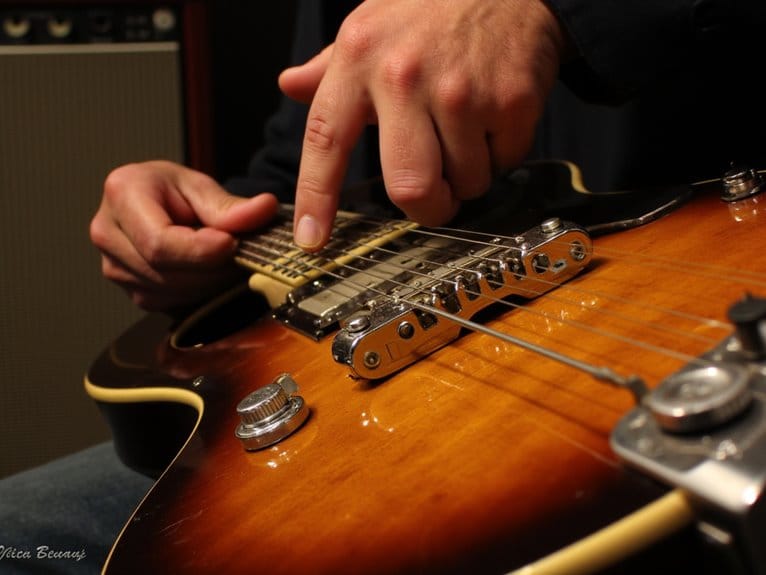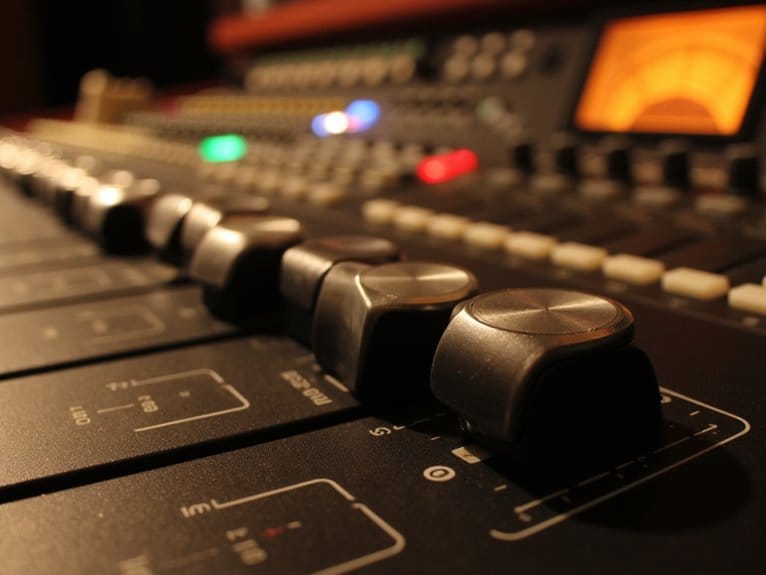Headphone Drivers Explained: Dynamic Vs Planar Magnetic Vs Electrostatic
You’ll encounter three main headphone driver types, each using different methods to convert electrical signals into sound. Dynamic drivers, the most common type, use electromagnetic voice coil movement and work efficiently at low power (16-300Ω) without amplification. Planar magnetic drivers require higher power (50-600Ω) and dedicated amplifiers but offer superior accuracy and lower distortion. Electrostatic drivers provide exceptional transparency through ultra-thin diaphragms but need specialized high-voltage amplifiers, making them the most expensive option. Understanding their technical differences will help you make the right choice for your audio setup.
We are supported by our audience. When you purchase through links on our site, we may earn an affiliate commission, at no extra cost for you. Learn more.
Notable Insights
- Dynamic drivers use electromagnetic voice coils and are most common, offering efficient bass reproduction with low power requirements.
- Planar magnetic drivers provide superior accuracy and low distortion but require dedicated amplification due to higher power needs.
- Electrostatic drivers deliver exceptional transparency through ultra-thin diaphragms but need specialized high-voltage amplifiers and significant investment.
- Power requirements increase dramatically from dynamic (16-300Ω) to planar magnetic (50-600Ω) to electrostatic (>1000Ω) driver types.
- Dynamic drivers dominate entry-level markets, planar magnetic serves mid-to-high ranges, while electrostatic technology requires premium investment.
Understanding How Headphone Drivers Work
While most people focus on frequency response graphs and impedance ratings when shopping for headphones, I’ve found that understanding the actual driver technology inside your cans makes a much bigger difference in choosing the right pair for your needs.
Think of drivers as the engine of your headphones, converting electrical signals into the sound waves that reach your ears. The three main types-dynamic, planar magnetic, and electrostatic-each use fundamentally different approaches to move air and create sound reproduction.
Dynamic drivers rely on electromagnetic forces with moving coils, planar magnetic drivers use thin diaphragms between magnetic arrays, while electrostatic drivers employ charged plates to control ultra-lightweight membranes for precise audio delivery. Dynamic drivers excel at producing deep bass due to their significant movement range and flexible membrane design. Interestingly, planar magnetic technology was initially developed for NASA applications before making its way into consumer audio equipment.
Professional studio monitors like the Sony MDR7506 utilize precisely tuned dynamic drivers with flat frequency curves to ensure accurate sound reproduction across the entire audio spectrum. The open-back design found in headphones like the Beyerdynamic DT 990 Pro creates natural sound reproduction by allowing air to move freely through the driver housing.
Dynamic Drivers: The Traditional Powerhouse
When you pick up most headphones today, you’re likely encountering dynamic drivers, the same fundamental technology that’s powered audio reproduction since the 1800s through a brilliantly simple yet effective design.
I’ve found that understanding how these drivers convert electrical signals into sound waves through voice coil movement, magnetic field interaction, and diaphragm displacement helps explain why they’ve remained the industry standard for over a century.
You’ll discover that their exceptional efficiency, low power requirements, and ability to deliver impactful bass without external amplification make them particularly attractive for everything from budget earbuds to premium audiophile headphones. While dynamic drivers excel at self-powered operation, pairing them with a quality headphone amplifier can unlock even greater performance potential, especially for high-impedance models.
Professional models like the OneOdio Pro-10 utilize large 50mm neodymium drivers to achieve an impressive frequency response range from 20 Hz to 40 kHz, demonstrating how dynamic driver technology continues to evolve for demanding audio applications.
How Dynamic Drivers Work
At their core, dynamic drivers operate on a surprisingly straightforward principle that’s remained largely unchanged since the 1920s, relying on electromagnetic forces to convert electrical audio signals into the mechanical motion that creates sound waves.
Here’s how the magic happens inside your headphones:
• Voice coil materials conduct electrical current, transforming the coil into an electromagnet that interacts with permanent magnets.
- Diaphragm shapes, whether cone or dome configurations, determine how efficiently mechanical motion translates into audible pressure waves.
- Electromagnetic interactions create precise back-and-forth movement that directly corresponds to your music’s waveform characteristics.
- Air compression and rarefaction from diaphragm displacement generates the sound waves you’ll actually hear.
- Diaphragm shapes, whether cone or dome configurations, determine how efficiently mechanical motion translates into audible pressure waves.
The beauty lies in this electromechanical transduction process, where varying electrical currents modulate magnetic forces acting on the voice coil, causing controlled diaphragm displacement that pushes air molecules in patterns your ears interpret as music.
Efficiency and Power Advantages
Though dynamic drivers might seem like yesterday’s technology compared to flashier planar magnetic and electrostatic alternatives, they’ve maintained their dominance in the headphone world for one compelling reason: they’re remarkably efficient at converting electrical power into sound.
This driver technology delivers satisfying volume levels without demanding dedicated amplifiers, unlike their power-hungry counterparts. You’ll find dynamic drivers work brilliantly straight from your smartphone, laptop, or any portable device, making the user experience incredibly convenient.
| Feature | Dynamic Drivers | Planar Magnetic | Electrostatic |
|---|---|---|---|
| Power Requirements | Low (16-300Ω) | High (50-600Ω) | Very High (>1000Ω) |
| Amplifier Needed | Rarely | Often | Always |
| Battery Life Impact | Minimal | Moderate | Significant |
| Device Compatibility | Universal | Limited | Specialized |
| Cost Accessibility | High | Medium | Low |
Their coil-and-magnet design produces substantial air movement with minimal electrical input, explaining why they’re perfect for portable scenarios.
Planar Magnetic Drivers: Precision Through Electromagnetic Forces
The planar magnetic driver represents one of audio engineering’s most elegant solutions to achieving pristine sound reproduction, utilizing electromagnetic forces in a way that I find fundamentally more sophisticated than traditional dynamic drivers.
Planar magnetic technology harnesses electromagnetic precision to deliver audiophile-grade sound reproduction that surpasses conventional dynamic driver capabilities.
You’ll discover that these drivers suspend a thin diaphragm between magnetic arrays, creating uniform movement that delivers exceptional sound reproduction accuracy, though planar magnetic design challenges include increased weight and power requirements.
The electromagnetic interaction produces several key advantages:
- Isodynamic diaphragm movement guarantees consistent force distribution across the entire surface
- Low distortion performance, particularly below 100Hz frequencies
- Fast transient response for precise audio signal tracking
- Wide frequency response combining deep bass with crystalline highs
While you’ll need dedicated amplification to drive these power-hungry drivers effectively, their durability and maintenance-free operation make them worthwhile investments for serious listening.
Power Requirements and Amplification Needs
When you’re selecting headphones, understanding power requirements becomes essential because each driver type demands vastly different amplification approaches. I’ve learned this lesson the hard way after underpowering several high-end pairs over the years.
Your dynamic drivers will typically work with most sources since they’re efficient and forgiving, but planar magnetics require considerably more current to reach their potential, while electrostatics need specialized energizers that can cost as much as the headphones themselves.
The efficiency ratings and impedance specifications on your headphone’s spec sheet aren’t just numbers to ignore-they’re the roadmap that’ll determine whether you need a simple portable amp, a desktop powerhouse, or that intimidating electrostatic energizer taking up half your desk space.
Efficiency and Impedance Differences
While I’ve spent countless hours testing headphones across different price ranges, I can tell you that understanding efficiency and impedance differences between driver types is absolutely essential for getting the best sound from your investment.
These impedance variations and driver sensitivity specifications directly impact which amplification you’ll need, and honestly, I’ve made expensive mistakes by overlooking these details.
Here’s what you need to know about each driver type:
- Dynamic drivers typically run 16-64 ohms with high sensitivity around 90 dB SPL/mW, making them phone-friendly.
- Planar magnetic headphones demand 32-150 ohms with lower efficiency, requiring dedicated amplifiers for peak performance.
- Electrostatic drivers need specialized energizers due to their extremely high, variable impedance characteristics.
- Mismatched amplification results in compromised dynamics and reduced sound quality across all driver types.
Amplifier Selection Guidelines
Selecting the right amplifier transforms headphone performance more dramatically than most people realize, and I’ve learned through years of testing that calculating your actual power requirements prevents both underpowered disappointment and expensive overkill purchases.
Different amplifier types serve distinct purposes: dynamic headphones often work acceptably with integrated solutions, while planar magnetics demand dedicated units with robust voltage output, and electrostatics require specialized energizers with bias voltage supplies.
When examining power ratings, verify your amplifier delivers adequate output at your headphone’s specific impedance-not just the manufacturer’s general specification.
I’ve found that high-impedance models need amplifiers with low output impedance (under 1/8th the headphone’s rating) to maintain proper frequency response and avoid dampening factor issues that muddy bass control.
On a final note
You’ve now got the foundation to make an informed choice about driver technology, though I’ll admit the decision isn’t always straightforward. If you’re budget-conscious and want solid performance, dynamic drivers deliver excellent value. For critical listening with adequate amplification, planar magnetics offer impressive detail. Electrostatics represent the pinnacle but demand serious investment in supporting equipment. Match your driver choice to your listening habits, budget, and amplification capabilities for best results.

